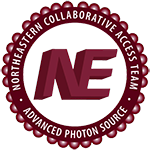Publications
(2015) Structural and Functional Characterization of the Enantiomers of the Antischistosomal Drug Oxamniquine. PLoS Negl Trop Dis. 9, e0004132
(2015) Structural basis for molecular discrimination by a 3',3'-cGAMP sensing riboswitch. Cell Rep. 11, 1-12
(2015) Structural basis for substrate recognition by the human N-terminal methyltransferase 1. Genes Dev. 29, 2343-8
(2015) Structural basis of membrane budding by the nuclear egress complex of herpesviruses. EMBO J. 34, 2921-36
(2015) Structural Studies of Geosmin Synthase, a Bifunctional Sesquiterpene Synthase with αα Domain Architecture That Catalyzes a Unique Cyclization-Fragmentation Reaction Sequence.. Biochemistry. 54, 7142-55
(2015) Structure of CARDS toxin, a unique ADP-ribosylating and vacuolating cytotoxin from Mycoplasma pneumoniae. Proc Natl Acad Sci U S A. 112, 5165-70
(2015) Structure of CARDS toxin, a unique ADP-ribosylating and vacuolating cytotoxin from Mycoplasma pneumoniae. Proc Natl Acad Sci U S A. 112, 5165-70
(2015) Structure of the ABL2/ARG kinase in complex with dasatinib. Acta Crystallogr F Struct Biol Commun. 71, 443-8
(2015) Structure-Function Analyses of the Interactions between Rab11 and Rab14 Small GTPases with Their Shared Effector Rab Coupling Protein (RCP). J Biol Chem. 290, 18817-32
(2015) Structure-function studies of histone H3/H4 tetramer maintenance during transcription by chaperone Spt2. Genes Dev. 29, 1326-40
(2015) Substrates Control Multimerization and Activation of the Multi-Domain ATPase Motor of Type VII Secretion. Cell. 161, 501-512
(2015) Unexpected features and mechanism of heterodimer formation of a herpesvirus nuclear egress complex. EMBO J. 34, 2937-52
(2015) A unique binding mode enables MCM2 to chaperone histones H3-H4 at replication forks. Nat Struct Mol Biol. 22, 618-26
(2015) A unique binding mode enables MCM2 to chaperone histones H3-H4 at replication forks. Nat Struct Mol Biol. 22, 618-26
(2015) Visualization of a radical B12 enzyme with its G-protein chaperone. Proc Natl Acad Sci U S A. 112, 2419-24
(2016) 1.92 Angstrom Zinc-Free APOBEC3F Catalytic Domain Crystal Structure. J Mol Biol. 428, 2307-16
(2016) An activated form of ADAM10 is tumor selective and regulates cancer stem-like cells and tumor growth. J Exp Med. 213, 1741-57
(2016) An activated form of ADAM10 is tumor selective and regulates cancer stem-like cells and tumor growth. J Exp Med. 213, 1741-57

